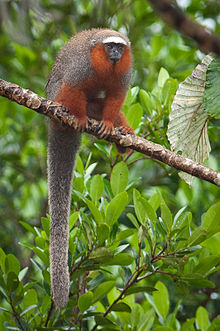
The Pitheciidae are one of the five families of New World monkeys now recognised. Formerly, they were included in the family Atelidae. The family includes the titis, saki monkeys and uakaris. Most species are native to the Amazon region of Brazil, with some being found from Colombia in the north to Bolivia in the south.
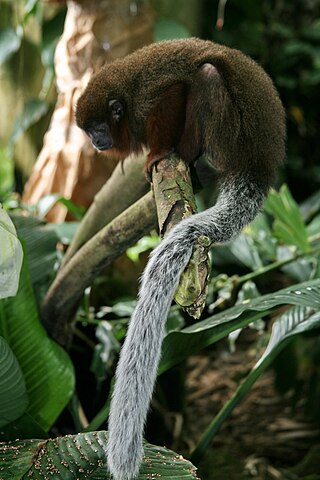
The titis, or titi monkeys, are New World monkeys of the subfamily Callicebinae, which contains three extant genera: Cheracebus, Callicebus, and Plecturocebus. This subfamily also contains the extinct genera Miocallicebus, Homunculus, and Carlocebus.

Stephen Nash's titi monkey, also known as just Nash's titi or Stephen Nash's monkey, is a species of titi monkey, a type of New World monkey, endemic to the eastern bank of the Purus River in Brazil. It was discovered by Marc van Roosmalen in 2001 when local fishermen brought specimens to his breeding center. It was described in 2002. It was named in honor of Stephen D. Nash, an illustrator for Conservation International, the organization that funded van Roosmalen's work. The monkey is largely silver with a black forehead and red sideburns and chest, as well as on the underside of the species' limbs. It is 28 inches long, although 17 inches is taken up by the titi's tail.

The white-coated titi monkey is a species of titi monkey, a type of New World monkey, from South America. It is found in Bolivia, Brazil, and Paraguay.

Hoffmanns's titi monkey is a species of titi monkey, a type of New World monkey, endemic to Brazil. It was described as Callicebus hoffmannsi in 1908.
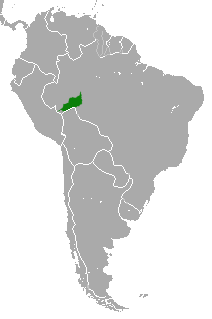
Hershkovitz's titi monkey is a species of titi monkey, a type of New World monkey, from South America. It is found in Bolivia, Brazil, and Peru. The common name is in reference to American zoologist Philip Hershkovitz, who described the species as Callicebus dubius in 1988.

The white-eared titi monkey also known as the Bolivian titi or Bolivian gray titi, is a species of titi monkey, a type of New World monkey, from eastern Bolivia and an area of western Brazil. The species has a range that extends east from the Manique River in Beni Department, Bolivia to southern Rondônia in Brazil. The southern end of its range includes forests around the city of Santa Cruz de la Sierra.
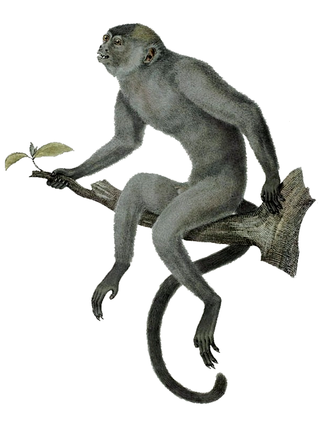
The ashy black titi monkey is a species of titi monkey, a type of New World monkey, endemic to Brazil. It was originally described as Callithrix cinerascens in 1823.
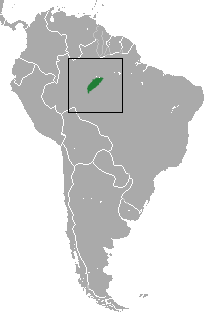
The chestnut-bellied titi monkey is a species of titi monkey, a type of New World monkey, endemic to Brazil. It was originally described as Callicebus caligatus in 1842.
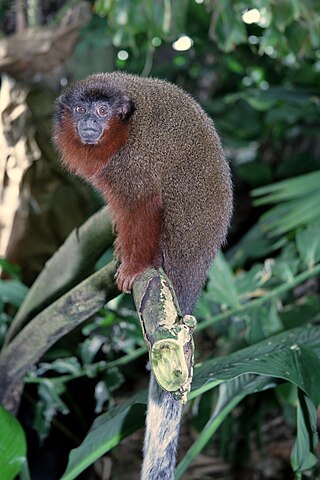
The brown titi monkey is a species of titi monkey, a type of New World monkey, from South America. It is endemic to Brazil. It was originally described as Callicebus brunneus in 1842 and transferred to the newly erected genus Plecturocebus in 2016.

The Baptista Lake titi monkey is a species of titi monkey, a type of New World monkey, endemic to Brazil. It was originally described as Callicebus baptista in 1939.

Rio Beni titi monkey is a species of titi monkey, a type of New World monkey, endemic to Bolivia.

The Rio Mayo titi monkey is a species of titi monkey, a type of New World monkey, endemic to Peru. The Rio Mayo titi, was thought previously to have a small range of origin in the Alto Mayo valley, but research has proven that the range extends southward and reaches the Huayamba River, as well as Bajo Mayo. It had been classified as vulnerable but due to major habitat loss and restricted living space, it is now classified as Critically Endangered. In October 2012, it was included in The World's 25 Most Endangered Primates list. An increase in deforestation is leading to the decrease in available living space for this titi monkey, forcing it to live in sympatry with another species of Callicebus. Yet in some areas, such drastic deforestation has resulted in extremely high population density. The Rio Mayo titi is better adapted to moderately populated areas, thus overpopulation negatively impacts the species. The forests the Rio Mayo titi lives in are being destroyed for agricultural purposes, leaving little forest for the monkeys. They were only seen a few times and featured in museums until 2003 when more research was done on them. In order for this species to survive, their forests need to be protected to avoid overpopulation. Different conservation groups are working to help P. oenanthe survive. Neotropical Primate Conservation, Proyecto Mono Tocón and Amazónicos para la Amazonia are working in the more southern areas to protect the monkey. The Rio Mayo titi is a fairly inconspicuous creature, making observation and research difficult to obtain. Therefore, the traditional use of transect observation to monitor the monkey's population, is less effective. Instead, other methods of calculating the titi monkey's density in certain areas have been taken, such as research into the species-specific calls endemic to a certain area.
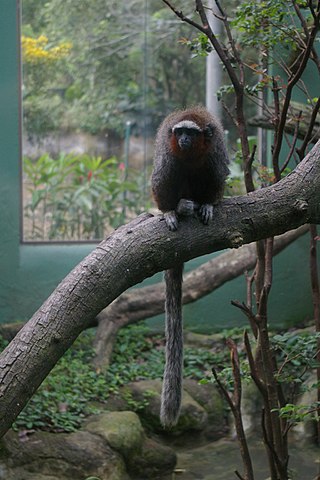
The ornate titi monkey is a species of titi monkey and is the smallest member of the family Pitheciidae, which also includes uakaris and saki monkeys. As it is a member of this family, it is classified as a type of New World monkey. It is endemic to eastern Colombia, and the only member of the Plecturocebus moloch group to occur north of the Rios Amazonas/Solimes/Napo axis, living at least 350 km away from the closest other member, the white-tailed titi, which lives in the south of Colombia. It was once classified as the same species as the white-tailed titi, but is now officially recognized as its own species. The ornate titi is also terrestrial.
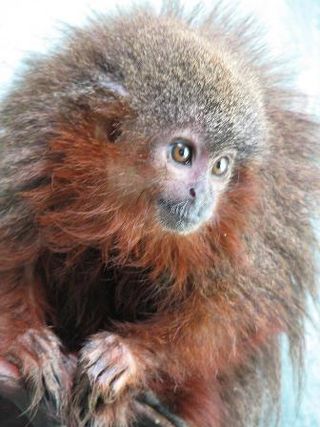
The Caquetá titi monkey, also known as the red-bearded titi or the bushy-bearded titi, is a species of titi monkey endemic to Colombia found in the Department of Caquetá region. Taxonomically, it is a member of the "Callicebus cupreus group", following Shunsuke Kobayashi's Callicebus grouping. It was first described by Thomas Defler, Marta Bueno and Javier Garcia in 2010. It is highly endangered due to habitat fragmentation and a small population.

Vieira's titi monkey is a species of titi, a type of New World monkey, from central-northern Brazil.
Milton's titi monkey is a species of titi monkey, a type of New World monkey, from southern Amazon rainforest, Brazil. It was named after the Brazilian primatologist Milton Thiago de Mello. Milton's titi was discovered in 2011 by Julio César Dalponte, and recognized as a new species in 2014.

Plecturocebus is one of three genera of titi monkeys.

Toppin's titi monkey is a species of titi monkey, a type of New World monkey, from Brazil, Peru, and Bolivia.

The Urubamba brown titi monkey is a species of titi monkey, a type of New World monkey, endemic to Peru.
